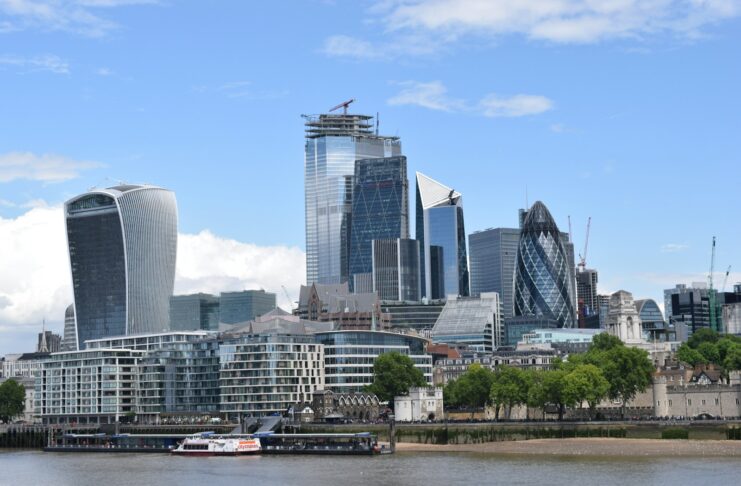Employers are racing to secure upgraded office space in London, with a surge in refurbishments driven not just by time and cost pressures but by the growing need for work environments that support sustainability and employee wellbeing.
New figures from professional services firm Deloitte’s London Office Crane Survey — which tracks office development activity across the capital — show that 83% of new workspace launched in early 2025 came from refurbishments rather than new construction.
That amounts to nearly 2 million square feet — equivalent to almost five Gherkin towers — of workspace brought up to modern standards in a single six-month period.
The reason? Refurbs are faster, greener and more likely to meet the expectations of a post-pandemic workforce.
A Flight to Quality, and a Focus on People
The idea that the pandemic spelled the end of the office has long faded. What has emerged instead is a clear trend toward higher quality workspaces, especially those designed with health, flexibility and environmental performance in mind.
“Particularly within some of the core locations, there is a real struggle to find space,” said Philip Parnell, a partner in Deloitte’s real estate division. “So we’re seeing landlords undertake refurbishments, which are typically quicker to deliver.”
While new builds can take up to six years, factoring in two years of planning and four of construction, many major refurbishments can be completed in 12 to 18 months. For employers seeking to bring teams back together in-person, the speed and flexibility of retrofitting is a significant draw.
But time-to-market is only part of the story.
Workplaces that prioritise natural light, fresh air, acoustic comfort and wellness-focused amenities are increasingly viewed as essential to supporting productivity, collaboration and mental health. Landlords and employers alike are recognising that wellbeing is not an optional extra, but a central feature of modern office design.
Deloitte’s research also reveals a sharp rise in leasing activity from the financial sector. In the first half of 2025, banks and investment firms accounted for half of all pre-completion lettings, up from just 16% four years ago. That compares with a steep drop-off in activity from tech companies, which had previously been the most active in the office market.
While the reasons are partly economic, observers say that major financial employers are also investing in upgraded headquarters as part of broader efforts to retain talent and re-establish a shared sense of identity.
What Makes a Workplace ‘Wellbeing-Ready’?
The refurbished offices now being brought to market are designed to meet a very different set of expectations compared with those of even a decade ago.
They include:
- Abundant natural light and improved indoor air quality
- Quiet zones and flexible layouts to suit hybrid working
- Ergonomic furniture and access to movement-friendly spaces
- Facilities such as showers, bike storage and meditation or wellbeing rooms
- Integration of plants, green walls and biophilic design
- A focus on environmental performance, including energy efficiency and reduced carbon use
Many refurbished offices are also being benchmarked against independent standards such as WELL, BREEAM and NABERS, which assess everything from ventilation and lighting to access to outdoor spaces and community engagement.
The Green Case for Refurbishment
Environmental factors are also playing a major role in the shift from new builds to retrofits.
Demolition and reconstruction are carbon-intensive activities, often requiring the removal and replacement of tonnes of concrete and steel. By contrast, upgrading an existing building allows developers to retain much of the original structure, dramatically reducing embodied carbon, which is one of the key contributors to a building’s overall environmental footprint.
With corporate sustainability targets becoming more prominent — and with tenants increasingly under pressure to disclose emissions across their operations — landlords who can offer greener office solutions are finding themselves in strong demand.
Yet supply remains tight. Prime rents in central London have risen sharply, and many employers are turning to upgraded “secondary” buildings that offer premium features without the premium wait.
Cost, Confidence and the Post-Covid Catch-Up
Developers say the current boom in refurbishments is also a product of pandemic-era pauses. When Covid-19 hit, many construction projects were shelved or slowed due to the uncertainty surrounding long-term office use. As demand has returned, developers have scrambled to deliver usable space, and refurbishments are the quickest route.
They’re also less exposed to today’s construction cost inflation. According to industry estimates, building costs have risen by as much as 50% since 2020. Higher interest rates have pushed financing costs even further, making large-scale new developments harder to justify.
Deloitte’s report points to continued caution in the sector, noting that “[c]oncerns about the impact of tariffs, stubbornness in the interest rate environment and geopolitical [issues] affecting supply chains are all impacting project viability”.
Advice for Employers
For HR, workplace and facilities leaders, the refurb boom presents both a challenge and an opportunity. The challenge is competition: demand for refurbished, wellbeing-ready space is high, and availability is limited.
But the opportunity lies in rethinking office strategy. Experts say employers who act early — and choose spaces that support wellbeing, sustainability and hybrid work — will be better placed to attract and retain staff in a competitive market.
Key steps include:
- Auditing current office conditions against wellbeing benchmarks
- Engaging staff in the redesign or relocation process
- Prioritising buildings with independent health and sustainability certifications
- Partnering with landlords who understand hybrid working needs
- Making the most of refurbished options that deliver both speed and impact
In the race for talent, upgraded office space may soon become a critical differentiator.


